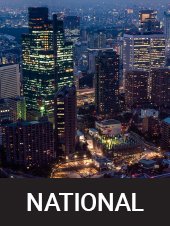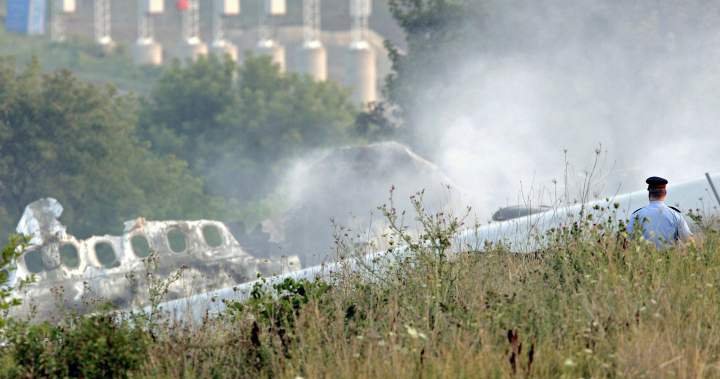Lisa Platt was returning to Toronto with a French exchange student on Air France flight 358 on Aug. 2, 2005.
At 15, Platt hadn’t travelled by air very much at that point and was enjoying the trip.
“We were all excited, wearing headphones, listening to the same music. It was a great day,” said Platt.
Eddie Ho, age 19, was a business student from South Africa attending Queen’s University in Kingston. He also said the trip from Paris was memorable.
“The service was great, the food was great, it was actually a very enjoyable flight,” Ho said.
But it was a flight that ended with the plane going up in flames after a disastrous landing, even though it initially appeared to passengers that the pilots would be able to stop on the runway 24L at Pearson International Airport in Toronto.
“I felt a huge impact like you were on a roller-coaster,” said Platt.
“The plane was making its way down the runway and everybody started clapping. Nobody knew what was going to happen after that,” said Ho.
According to the aviation investigation report by the Transportation Safety Board of Canada, weather conditions for the landing included “very dark clouds, turbulence and heavy rain.”
“The runway was covered with water, producing a shiny, glass-like surface,” the report continued.
The Air France Airbus A340 touched down “3,800 feet down the 9,000 foot runway” and was not able to stop, crash investigators concluded.
“It departed the end of the runway at a groundspeed of 80 knots (148 kilometres per hour) and came to rest in a ravine,” the TSB report said.
Seconds after the plane came to a stop, fire was observed out the left side of the aircraft and smoke was entering the cabin, the report said.
For passengers, including Ho and Platt, it was clear they needed to get out of the plane immediately.
“Some people were reaching up for their bags and others who were in the middle of the plane, they knew what was going on, and they were climbing over seats pushing people out,” said Ho, who was seated in the economy cabin just behind the business class section.
When Ho went to the nearest exit to get out, he discovered that the emergency evacuation slide hadn’t deployed. He faced a choice: jump to the ground and risk injury or look for another way out.
“I decided not to risk the jump; I ran to the front to the first exit on the left,” he said.
At the second emergency exit, Ho said he faced another challenge.
“The chute came out, but it did not inflate. But at that point I had no other choice,” said Ho, who jumped and sustained minor injuries.
“There were passengers near me who broke their hips, broke their legs, had much more serious injuries.”
Platt, seated with her friend toward the rear of the plane, had an easier time escaping.

Get breaking National news
For news impacting Canada and around the world, sign up for breaking news alerts delivered directly to you when they happen.
“My shoe popped off. I remember grabbing my shoe with my hand thinking, ‘I’m going to need this,’” Platt said.
After descending on the escape slide, Platt observed a passenger concerned about what he left behind.
“I remember a guy in a brown suit worried about his luggage at the bottom of the chute, and I thought, that’s not the right time to worry about your luggage,” Platt said.
Ho, Platt, and others made it out of the plane, but weren’t out of danger yet.
“My first thought was, we have to get away from the plane because it’s going to explode,” he said.
“We need to get away.”
Ho said he and another man assisted an injured passenger lying on the ground.
“(We were) carrying him, just trying to drag him away from the plane,” said Ho.
About the same time, Ho pulled out his Canon Powershot digital camera and quickly grabbed a few frames of the burning airplane as he moved away. At the time, smart phones hadn’t been invented and few people carried cameras every day.
“I remember taking a couple of shots, I didn’t aim or do anything, I just took it out and snap, snap,” said Ho. One of his pictures was awarded the 2006 Canadian Press Picture of the Year in the news category.
Eventually, Ho was transported to the Pearson air terminal where he joined other plane crash survivors who were grouped together.
“They actually thought it was a terrorist attack, so they didn’t let any passengers out,” Ho said.
Even though Ho and Platt had abandoned their belongings in the aircraft, that fact didn’t prevent customs officers from wanting to know what they had brought back from Europe.
“I still remember the customs folks, CBSA (Canada Border Services Agency) came out and asked me multiple times: ‘Do you have anything to declare,’” and insisted he sign a declaration card.
“I had nothing to declare,” Ho said.
Platt said she, too was asked to make a declaration.
“They were just doing their jobs,” she said.
With news of the Air France crash making headlines around the world, Platt wanted to let her family know she was all right.
She reached her mother by telephone.
“I was like, ‘Mom, it’s me, it’s Lisa,’ recalling how her mother appeared surprised and probably relieved to hear her voice.
Late that evening, Platt and others were allowed to leave after the airline had accounted for all the passengers and crew members.
“We were pretty sure there were fatalities,” said Ho, recounting what he felt in the hours after the crash.
To the surprise of many who were onboard, all 297 passengers and 12 crew members had made it out safely.
Everyone survived.
But quickly, many passengers would start dealing with the aftermath.
“It was exhausting, I think it was the next day when it all hit me,” said Platt.
In the months and years ahead, the survivors would come to terms with what they had gone through that afternoon in the driving rain and lightning at the end of the runway.
Ho and Platt experienced post-traumatic stress disorder (PTSD) and sought help from therapists for about a year.
“I remember I started to get nightmares, and I slowly didn’t like to be on buses, I didn’t like to be in cars,” said Platt.
To this day, Platt says she must be the one driving a vehicle in a rainstorm.
At the end of her counselling sessions, Platt says her therapist would hold her feet for about five minutes, encouraging her to stay grounded.
Platt later had the Air France flight number, AF 358, tattooed on her ankle, a daily reminder of what she had survived.
Air France provided a free, return trip to every passenger on the ill-fated flight. Platt chose to travel back to Paris and to return to Toronto exactly one year later on the same day and flight.
“I cried and you grip harder than you normally grip,” she said, referring to holding to the armrests.
Years later, Platt went on to pursue a career that might be considered unusual for an air crash survivor.
“I thought, ‘I want to be a flight attendant, I want to get on these planes and I can do this,’” Platt said.
After initially working as a customer service representative, Platt got a job as a flight attendant with Porter Airlines. She spent almost ten years with the company flying in and out of Toronto before pursuing another career.
Eddie Ho finished his university education and became a chartered professional account in Toronto.
He says he took first flight a year after the crash but it took about five years before he stopped thinking about the crash when he boarded plane.
As a frequent flyer for work, Ho says he tried to put other jittery flyers at ease when he can.
“Sometimes it’s a passenger next to me and they’re afraid of flying,” said Ho.
“‘I’ll give them support right away, don’t worry, it will be fine,” he tells nervous passengers.
Ho holds something back, however.
“I don’t tell them that I’ve been in a plane accident. I usually tell them afterward,” said Ho.
Ho lets people know that crash survivors don’t get free perks beyond that initial free flight.
“The stories that you get free, unlimited travel for the rest of your life or free elite status for the rest of your life, no, that doesn’t happen,” he said.
Ho said the crash has influenced how he approaches life.
“I have a mindset of — how can I help others?” and says he does not hold grudges as a result of the crash.
Similarly, Platt recalls how fortunate she is to have escaped death 20 years ago.
“I have a lot of gratitude. I am very thankful we made it out okay,” said Platt.
“For me, things may have been different if we didn’t all survive.”
Read the full article here
